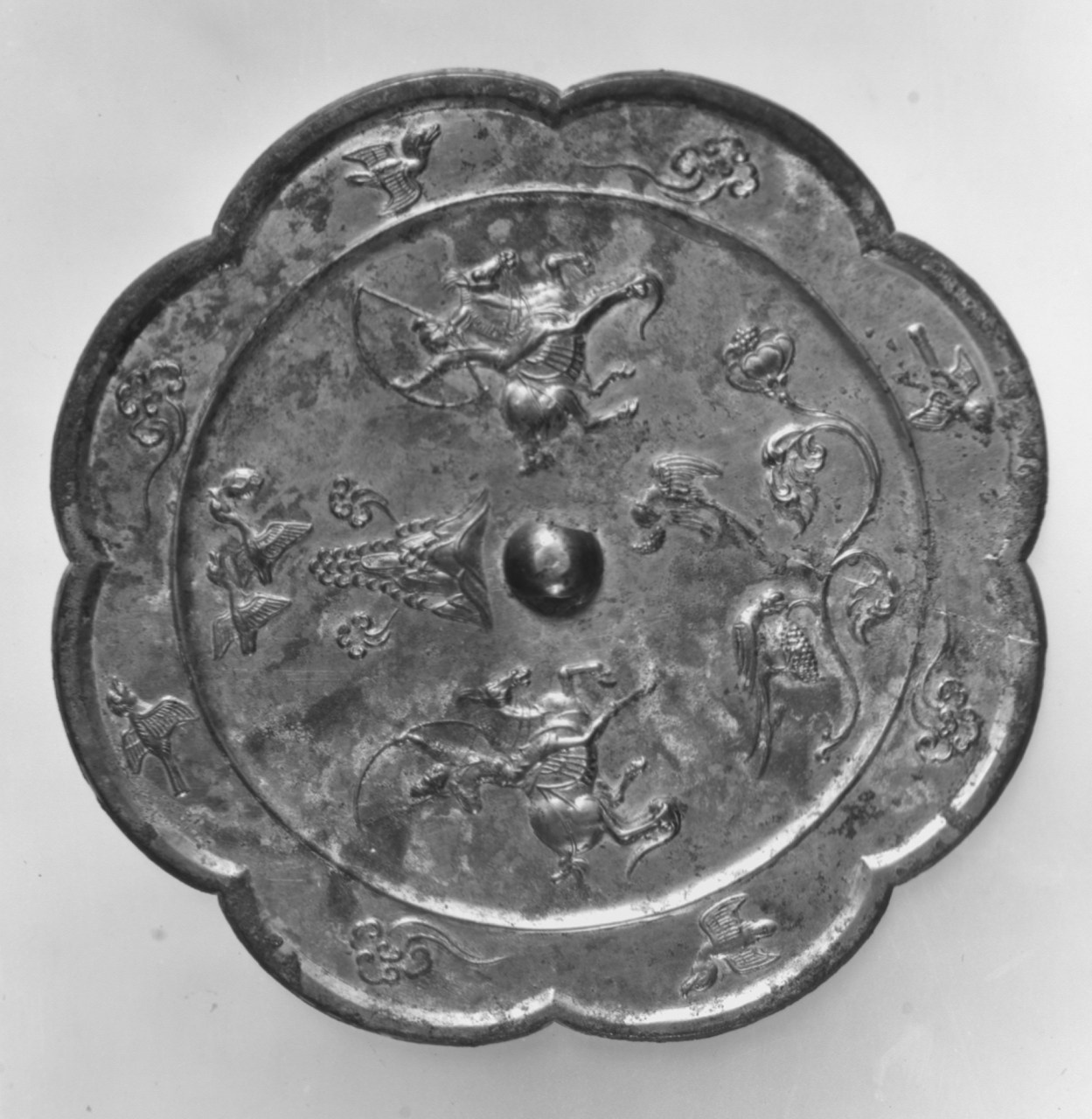Did You Know? The Transmission and Exchange of Handheld Mirrors across the Silk Roads
© The Metropolitan Museum of ArtMirrors, objects which reflect an image, have a wide range of both practical and symbolic uses, and as such can provide considerable insight into the artistic and other cultural values of various societies across Eurasia. In the regions encompassed by the Silk Roads mirrors not only functioned as personal objects of practical use but were also associated with different funerary rites and played a role in various rituals and some forms of entertainment. In particular the different shapes, designs, and decorative features of personal handheld mirrors used to look at one’s own reflection can help chart the aesthetic developments of various cultures as well as reveal their interconnections and exchanges.
Throughout history mirrors have been made from a wide range of different materials. The first proto-mirrors were pools of still water which could act as reflective surfaces. By the Bronze Age (3200 - 600 BCE) mirrors were made in many different regions by polishing metal disks made from bronze, copper, or silver. Some of the first man-made mirrors, in this case pieces of highly polished obsidian stone, came from the Anatolian Peninsula around 6000 BCE. Later mirrors of polished copper were made in Mesopotamia around 4000 BCE and in Ancient Egypt around 3000 BCE. In China bronze mirrors were manufactured from around 2000 BCE with some of the earliest examples produced by the Qijia culture (2200 – 1600 BCE). Metal mirrors remained the norm in the ancient world and throughout the Middle Ages. Later, a highly reflective alloy of copper and tin was used in mirrors until the invention of glass and a use which may have originated in China or the Indian Subcontinent, but these were fairly hard to produce and were typically owned by the elite. It wasn’t until the 1st century CE that glass began to be used to make mirrors with the advent of the invention of soda-lime glass and glass blowing techniques.
Polished metal mirrors, which were often ornately decorated on the non-reflective side, were a popular trade object, along with other bronze ornaments, exported from China and exchanged along the Silk Roads. Finds from archaeological sites across the Silk Roads indicate that metal mirrors typically came in three different forms. The first was the polish metal disk frequently referred to as the ‘Chinese mirror’ which was often decorated on the non-reflective side. This type of mirror was held by cupping your hand around the edges or by holding a cord threaded through a metal loop on the back. The second type of mirror was a polished metal disk with a vertical handle where the handle and mirror were made of one single piece of metal. The third type, although less numerous in archaeological finds, was a polished metal disk of silver, bronze, or silver plated bronze with a horizontal handle soldered onto the back (i.e., mirror and handle were not one single piece of metal). The horizontal handle mirror is thought to have originated in the Roman world before quickly appearing in the Indian Subcontinent. It has been suggested that it was transfused to the Indian Subcontinent via trade across the Kushan lands, Central Asia, and the Iranian Plateau.
One example of the ‘Chinese mirror’ type was uncovered buried in a grave at Kobyakova on the Pontic steppe near the Sea of Azov bounded by present day Ukraine and Russia. It dates from sometime between the 1st century BCE and the 1st century CE. The back of the mirror features a design of four rounded balls and four ‘S’ shaped scroll decorations. Designs of this type are frequently seen on metal mirrors originating in China and in particular this type of quatrefoil (an ornamental design of four lobes or leaves) was a common motif in Han period (202 BCE – 220 CE) funerary art. However, as the mirror uncovered at this grave site is much larger than those made in China during this time, it is speculated that this could be a locally produced copy of a Chinese prototype, whose presence as far away as the western steppe illustrates well the influence of these long distance networks.
However, there does not appear to have ben one single transmission of the different types of mirror from one region to the other, but several different routes of diffusion at different times corresponding to changing spheres of influence. In the context of the Silk Roads and exchange between China and its neighbouring steppe societies, the mirror has long been associated with China and it was hypothesised that mirrors were an example of independent invention having arisen in China during the Yin period (1600 – 1046 BCE). Contrary to this, recent scholarship has suggested that mirrors may have reached China via exchange with Central Asia. There are two possible theorized routes for this exchange, one possible route involves the mirror arriving in China from the Bactrian-Margiana cultures of Northern Central Asia having been introduced to the Qijia culture (2200 – 1700 BCE) through the Hexi corridor in what is present day Northwest China. From here the technology and fashion for mirrors spread to the Bronze age Erlitou culture (1900 – 1500 BCE) which was located in the region just south of the Yellow River in Central China. In the second possible chain of events, mirrors reached central China via interactions between the steppe occurring via a different Silk Roads route, the Northern Zone, which may have been more active during this time.
See Also

Medieval Cookbooks Reflecting Exchanges in Gastronomic Traditions along the Silk Roads
The ancient routes of exchange across Central Asia directly shaped the diets and foods consumed in Eurasia today. In fact, many of the most familiar grains, fruits, legumes, and nuts enjoyed around the world were first spread across Central Asia

The City of Balkh: Ancient Capital of Bactria and Centre of Buddhism and Zoroastrianism along the Silk Roads
The city of Balkh, situated on the plain between the Hindu Kush Mountain range and the Amu Darya river (the ‘Oxus’ in antiquity), in the north of modern day Afghanistan, sat at a cross-roads along the Silk Roads







